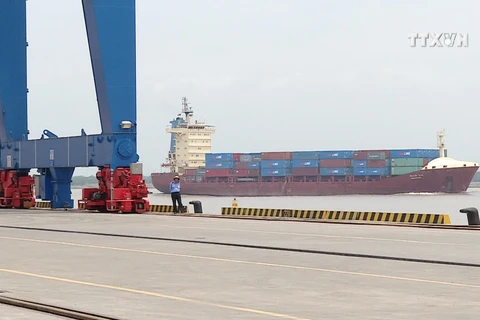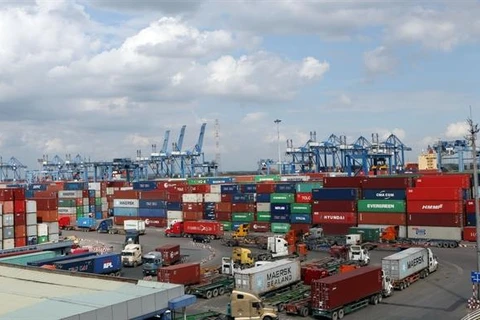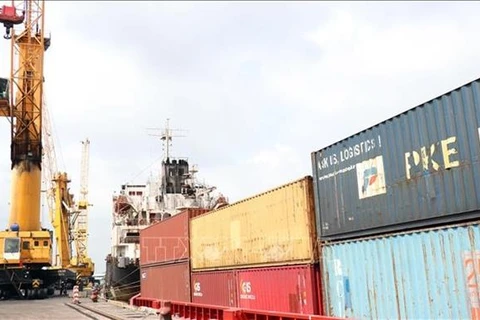 HCM City is developing a strategy to become a logistics hub, focusing on connections to other provinces in southern Vietnam (Photo: VNA)
HCM City is developing a strategy to become a logistics hub, focusing on connections to other provinces in southern Vietnam (Photo: VNA) HCM City (VNS/VNA) – Ho Chi Minh City is working on a logistics development strategy that would make the city a major logistics hub and reduce logistic costs to 16 percent of Vietnam's GDP in 2025.
During a conference held early this week in HCM City, Nguyen Ngoc Hoa, Deputy Director of the municipal Department of Industry and Trade, said the municipal People’s Committee had told the department and Vietnam Logistics Research and Development Institute (VLI) to work on a logistics development project to 2030.
The project will focus on building three logistic centres through technical infrastructure, and will aim to increase the number of businesses hiring specialised logistic services, with the goal of reducing costs.
In addition, the project will consider locations and scales of logistic centres, as well as improve logistic service quality.
To continue as the economic leader of the country, HCM City should have a well-developed logistics industry connected to other provinces, especially because many of the city's major exporting industries are moving away from the city to other provinces, experts said.
To Thi Hang of the VLI said that southern Vietnam has 12 inland container depots, with newer and bigger ones offering more comprehensive logistic service packages. Such depots are also linked to domestic waterways and located near seaports.
HCM City has six depots, but five of them, which have been operating over the intended capacity, are planning to relocate.
In addition, many of Vietnam's logistic businesses rely on contracts from foreign companies, as well as from big businesses.
A survey done by the institute showed that most of the city's port clusters were facing difficulties such as congestion, unhealthy competition, poor connection between small ports, and the inability to expand due to locations in urban areas.
About 41 percent of the surveyed businesses said that Thu Duc District and District 9 are the best places for a logistic centre, due to convenient traffic and future airport and port development.
During the conference, several businesses said that a comprehensive logistic development project was crucial for ensuring sustainable growth and avoiding a situation where developments occur independently of each other.
Inland container depots along with good storage spaces and clearance systems are important for a logistics centre, they said, adding that current depots in the city lack traffic connections within the city and to other provinces.
HCM City is the biggest consumer market in the country, and the largest distribution and supply centre in the South. Most of the imports and exports from southern provinces and trade between provinces go through HCM City.
The city, which is also located near major East Sea shipping routes, can use multiple methods of goods delivery due to favourable landscape, according to the department.
HCM City plans to have eight depots by the end of 2030, with a total size of around 102 to 137 hectares.
The logistics project will be submitted to the city government for approval in December./.
VNA
























